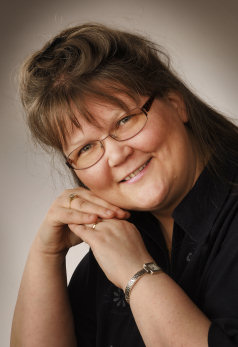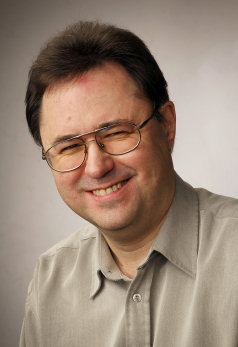REGISTRATION | COMMITTEES | SPONSORS | TRAVEL | NEWS | CONTACT | EUROHAPTICS SOCIETY
June 12-15, 2012
Hotel Rosendahl
Tampere, Finland
February 19, 2012:
All submissions due
April 2, 2012:
Notifications for acceptance
April 16, 2012:
Camera-ready papers due
April 20, 2012:
Early registration deadline
June 12, 2012:
Workshops
June 13-15, 2012:
The main conference

Social-haptic communication - a practical approach using haptices and haptemes
Russ Palmer, International Music Therapist
Haptices and haptemes are based on the PhD research of how dual-sensory impaired (deafblind) people can share environmental information interactively through touch. The presentation will include a brief description of longitudinal and developmental research on how to adapt visual and auditive information onto the body. The research is based on haptics and has been recognised as social-haptic communication (interaction between two or more people). This approach differs from haptic communication (object based contact).
The research describes haptices, touch-related messages, in different situations enhancing sensory information and functioning as an independent language. Haptices includes confirmation system, social quick messages, face expressions and behaviour, body drawing, orientation and directional information, guiding and sharing art and hobby experiences by touch.
Haptices consist of haptemes; movements, change of directions, pressure, speed, frequency, size, length, duration, pause, change of rhythm, shape, macro and micro movements. This research classifies how the body can be identified into different areas such as body orientation, varied body postures and position levels, social actions and which side of the body is used.
When the hearing and sight deteriorates communication consists of multi-systematic and adaptive methods. A person's expressive language, spoken or sign language usually remains unchanged, but the methods of receiving information could change many times during a person's lifetime. Social-haptic communication system has expanded to other client groups such as visually impaired and profound learning disability around in Europe, Australia and Canada.
| Riitta Lahtinen, PhD | |

|
Riitta is a communication researcher at the Finnish Deafblind Association. Her PhD theses “Haptices and haptemes” was accepted at the Behavioural Science Faculty at the Helsinki University in 2008. She was given the innovative award prize for her work in the same year. She has 30 years experience working as a qualified Teacher, Sign Language Interpreter and Mobility & Low Vision Teacher, Audio Describer and writer. She is involved in running international courses on communication methods for deafblind people, couples, interpreters and professionals in Europe focusing on the needs of deafblind people, and training interpreters, planning University academic courses and publications. Currently she is doing her postdoctoral research on haptices and haptemes. |
| Russ Palmer, SRAT(M), Music Therapist | |

|
Russ is an International Music Therapist, songwriter, musician and writer. In 1993 he was involved in the development of a portable music floor known as the Tac-Tile Sounds SystemTM with Sheffield University. His first academic publication with Manchester University titled ”Using Music with Sensory Impaired People including those with Profound Learning Disabilities (PLD)” was published in 2000. He released his first CD title Warm Summer Days in 2009 and a DVD titled Pulse, a joint collaboration project with the Finnish Deaf Association. Through musical expression and therapy he applies a concept and understanding of how people who are losing their hearing and sight can develop other senses in their bodies and how to interpret rhythm and vibrations. He gives international presentations as a hearing and visually impaired music therapist with two cochlear implants with his partner Dr. Riitta Lahtinen. Currently he is researching musical haptices with Turku University. |
Click here to see information about other keynote speakers.